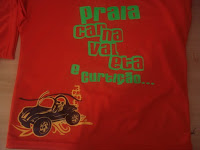Dry Fit is a special synthetic fabric with treated polyester that has the characteristics of being light, flexible, comfortable and breathable (totally absorbs sweat). Therefore, it is ideal for sports players.
Synthetic fabric T-shirts have notable advantages, they dry faster, they don't wrinkle, they don't fade or they suffer from moth attack. On the other hand, they cannot get close to a spark or ember that melts, and of course, the deodorant remains indispensable because the synthetic fabric retains odor more easily.
According to users, there are dry-fit fabrics that do not have proper functionality, they stink or absorb the smell of the deodorant. This may be because the cheapest T-shirts are made with second-rate "Chinese" fabrics, which do not always work. Just having the visual characteristic of dry, which is a form of manufacture.
There is also bacteriostatic (antibacterial) tissue.
DRY line fabrics should not be washed with fabric softeners, as it blocks sweat absorption technology.
In summary, dry fit is a concept used to define the fabric made with polyamide and elastane, that is, the Supplex which, due to its structure and the titration of the thread, provides a propitious comfort for sports pieces that require a high capacity for perspiration. . The piece with the Dry Fit concept, has the fabric with the ability to remove moisture from the body and transport it out of the fabric.
For Screen Printing in Dry Fit
The engraving and printing process is the same as the serigraphy used on cotton or polyviscose. However, as we are printing on a synthetic fabric, we have to use ink for synthetic fabrics, using normal water-based ink, we have the risk of the print not being properly fixed. Suddenly in the second wash there goes with all the nostalgic drawing.
Well, the appropriate ink will infiltrate (without leaving flaws in the holes that characterize the dry fit) and fix it better on the fabric.
Some other precautions that we must pay attention to can define whether the impression will look good or if it will only give us work and a headache.
For example
-If we are going to use a background with repeating, the ink passes directly through the thin fabric and can even stick it on the table. So when it is time to remove it, the glue can even come off the table on the inside of the shirt.
-This fabric practically ignores the existence of permanent glue ... We must pass a lot of glue on the table to ensure that the substrate does not peel off, compromising the registration.
-The constant cleaning of the cradle cannot be ruled out either, because although it does not leave residues of "lint" such as cotton, the excess paint that remains on the table also affects the adhesion of the dryfit.
The sublimation process, where it is first printed mirrored on a special temporary liner and then, through a thermal press transferred to the dry fit. It may be a more viable alternative than conventional silkscreen, but since I do not master the technique, my opinion on sublimation is almost nil.









0 Comments
Thanks for the comment.
Subscribe to our YouTube channel.